Efficiency House Plus Settlement in Hügelshart: Residents Save More Than 50% of Energy Costs
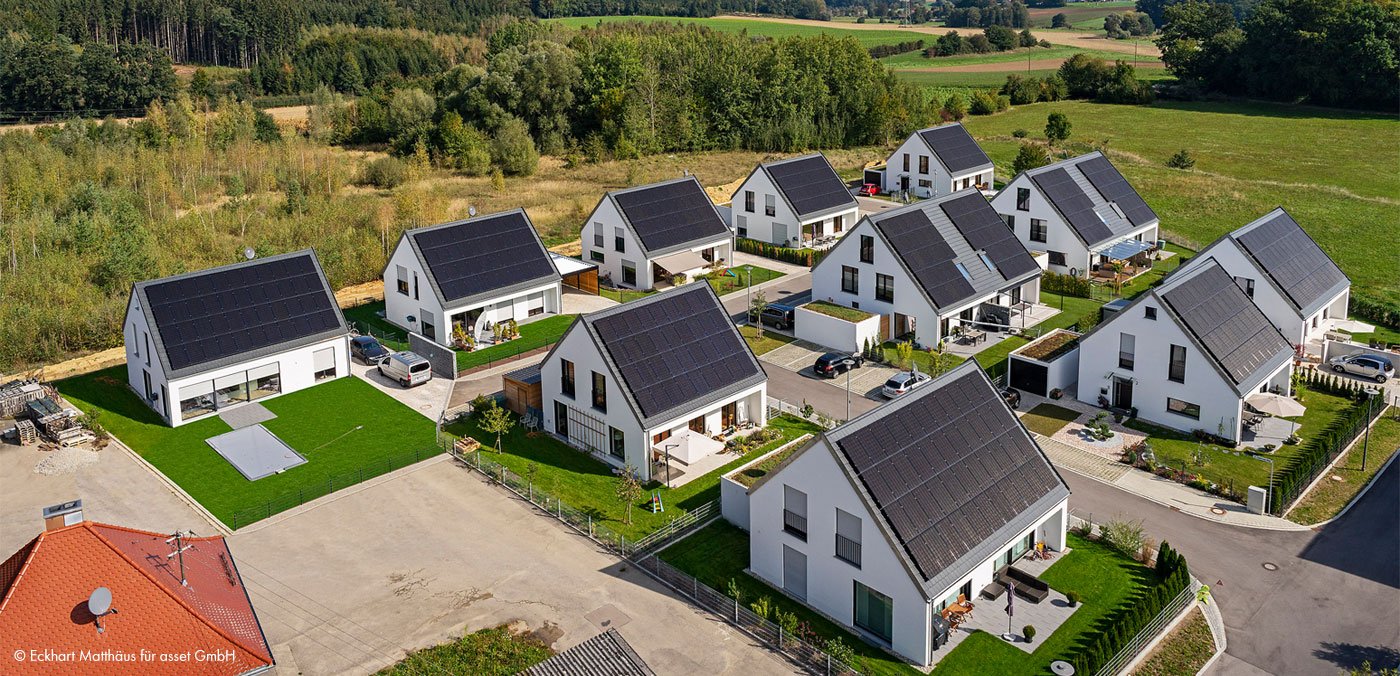
It’s been roughly a year since the residents of the 13 Efficiency House Plus homes in Hügelshart, Bavaria, Germany, moved in. They have already experienced one hot summer and their first winter. So how have these innovative, low-energy homes featuring their own PV systems, battery-storage systems and heat pumps fared during this time, and what improvements can still be made? Let’s take a look.
The exciting concept underlying the Efficiency House Plus housing development, which was built in accordance with the criteria of the Federal Ministry for the Environment, Nature Conservation, Construction and Nuclear Safety, was to design houses that generate more energy than they consume. The development, which comprises a total of 13 homes, was built by Augsburg-based Asset Grundbesitz- und Vermögensverwaltung GmbH in partnership with BayWa and features system solutions and smart energy management systems from SMA.
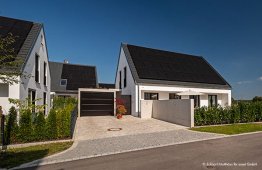
Radiant sunshine every day: the record-breaking summer of 2018 meant that the residents made more frequent use of their air-conditioners, increasing consumption values more than expected.
80% of simulation values achieved
Just one year since the first residents moved in, the housing development has an average self-sufficiency ratio of 53% in terms of household electricity, hot water, heating and air conditioning, which means that it has already achieved around 80% of the simulation values calculated beforehand. According to Steffen Mechter, head of Strategic Business Development at BayWa Building Materials, if certain extraordinary factors (e.g., air conditioning, which was not taken into account in the equipment technology simulation) are disregarded, the calculated self-sufficiency ratio is somewhere in the region of 70%.
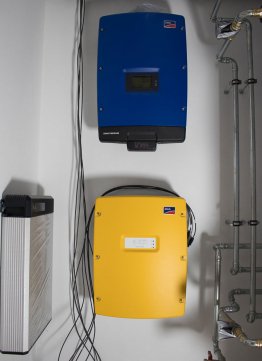
A blue Sunny Tripower PV inverter and yellow Sunny Island battery inverter ensure that solar power from the roof is available for electrical appliances or stored in the LG battery.
User behavior and energy management define the level of efficiency
One particularly fascinating finding of this project is that the behavior of residents has a much larger impact on the energy efficiency of their homes than previously thought. Household electricity consumption, for example, was much higher than the 3,200 kWh/a calculated in the simulation because the temperatures experienced in the record-breaking summer of 2018 meant that the residents made more frequent use of their air-conditioners. The energy management system is to be adjusted accordingly so that cost-effective solar power can be used to an even greater extent in the future.
More conscientious energy usage with no compromise on comfort
All of the nine single-family homes and four semi-detached homes are equipped with a PV system, a Sunny Tripower PV inverter, a Sunny Island battery inverter, an LG storage system and Sunny Home Manager 2.0. They also all have air-handling ceilings, air-to-heat pumps featuring inverter technology and thermal water tanks. The Sunny Home Manager 2.0 energy manager controls the energy flows in the homes and integrates the Stiebel Eltron heat pump into the energy management system. Using the SMA Sunny Portal and Sunny Places monitoring portals, residents can monitor their own energy management and keep an eye on solar power production and energy consumption. According to an analysis of the past year, this helped many of the residents to be more conscientious in their energy usage without having to compromise on comfort.
Dr. Ulrich Stiebel (left), Supervisory Board member at Stiebel Eltron, and Armin-Alija Hausic (right), SMA Sales Engineer.
“This housing development is a prime example of the integration of renewable and modern technical components such as heat pump heating from Stiebel Eltron as well as ceiling heating, which works via radiant heat,” said Armin-Alija Hausic, SMA Sales Engineer. “It impressively shows how the energy transition can be realistically implemented.”
Armin-Alija Hausic, SMA Sales Engineer

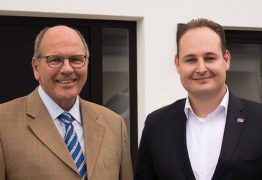

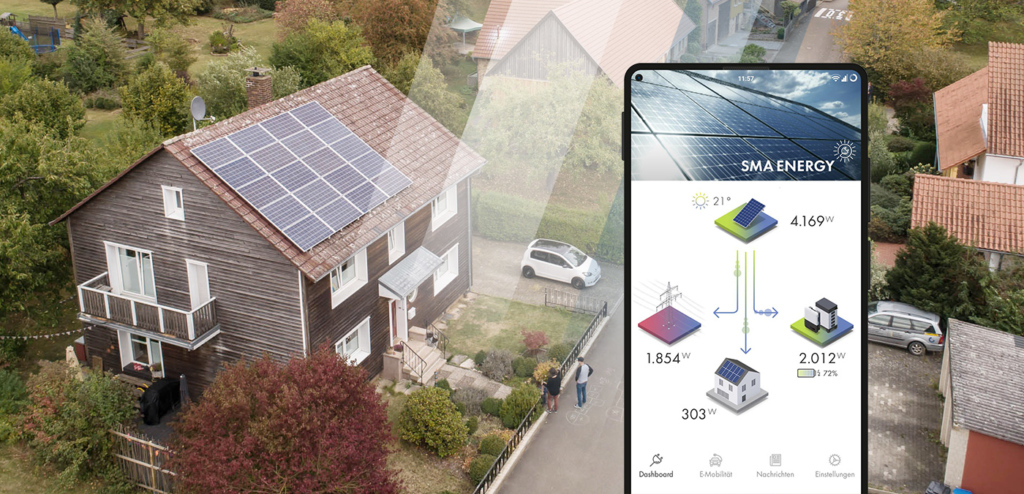
This is an amazing blog. Thanks for sharing with us. It contains lots of information regarding the property.
Is there any communal interaction, or is each house standalone?
Hi Carl,
There is no communal interaction at Hügelshart, each house is standalone.
Kind regards,
Anke